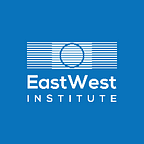Rethinking Middle Eastern Sectarianism
In an attempt to make sense of the seemingly endless array of conflicts that plague the Middle East today, many Western observers have come to analyze current events in the region through a sectarian prism by erroneously interpreting them as a product of the inherently intolerant nature of the region’s history, religions, and people. Even U.S. President Barack Obama believes that what we see today is simply “rooted in conflicts that date back millennia,” only adding to the atmosphere of intractability and hopelessness.
While sectarian violence has definitely been a predominant theme in the Middle East for about as long as we can remember, this orientalist conceptual framework represents a dangerous oversimplification of the reality on the ground, resulting in flawed policies that have only exacerbated the ongoing conflicts. In actuality, analyzing contemporary context is much more relevant to understanding the current state of Middle Eastern politics than archaic theological disputes. At the end of the day, the violence that we see today is much less about deeply-rooted, irreconcilable theological differences, but rather externally-influenced political power struggles from beginning to end.
When the topic of sectarian violence is raised, it is often followed closely by the example of Lebanon, a country that has been seen as a microcosm of the region’s sectarian tensions since before its establishment. From Maronite Christians to Druze, Sunni to Shi’a, Lebanon has seen it all. While many jump to the conclusion that the repeated violence can be simply explained as age-old intolerance of Muslims towards Christians and vice versa, much of the blame rests on the shoulders of European actions that precluded the nation’s establishment.
Prior to the 19th century, while still under Ottoman rule, communities throughout the Mount Lebanon region were predicated on hierarchical delineations of nobility, rather than religious divide. Towns and villages in the region were largely religiously mixed, as opposed to the reality that we see today. However, with the advent of European colonialism, imperialism, and general interventions, Westerners came to view Mount Lebanon, with its sizeable Christian (Maronite) population, as an enclave from which their attempts to “civilize” the Ottoman Empire could be carried out. European powers singled out Christian communities for special protection, favored Christian merchants, and allotted special rights, resulting in an imbalance of affluence across religious delineations. When Christian and Muslim elites began to compete for rights, expanding competition to include issues outside of the economic sphere, they began to do so along religious lines. Not only did this create religion-oriented socio-political identities, it also effectively formalized sectarian divides and laid the groundwork for the future socio-political fabric.
The establishment of Lebanon in 1926 and the developments that followed put the icing on the cake. With the signing of the 1943 “National Pact” that organized the government into a confessional system necessitating a Maronite president, Sunni Prime Minister, and Shia Speaker of Parliament, sectarian divides became further enshrined in the country’s political foundation. Thus, with centrality impossible and divisions and corruption inevitable, it is no surprise that violence soon followed.
Today, the stagnant state of Lebanon’s government proves it to be a tenuous political project. In the midst of regional chaos and instability, the state of Lebanon has surprisingly stayed afloat, but not without sporadic scares. Only recently, the government was able to select a president after over two years of paralyzing disagreement on whom to fill the gaping void. This inability to reach productive compromise has resulted in various failures in crises management, further exacerbated by issues ranging from difficulties in absorbing the influx of over one million Syrian refugees to the unprecedented mountains of trash in Beirut’s streets, caused by the failure to reach agreement with the country’s primary garbage treatment company. At the end of the day, a mere walk through the culturally divided, yet astonishingly resilient, streets of Beirut is enough to give a clear sense of just how deeply ingrained these sectarian divides have become.
This is not to say that, before foreign intervention, life in Lebanon and the rest of the Middle East was void of religious conflict and sectarian violence. It would be unwise to assume that theological discrepancies between the different religions of the region are not important. However, it is clear that initial European and Western insistence on inherent differences between Islam and Christianity came to transform the social, political, and economic significance of religion in Lebanon and in a larger sense the rest of the region, reifying religious identities that were once significantly less concrete and competitive.
Failure to recognize this fact has resulted in catastrophic policies, perhaps most notably the U.S.-led invasion of Iraq in 2003 that, which ended up flipping the regional balance of power to Shi’a. The U.S.-backing of Shi’a prime minister Nouri-al Maliki, known for his anti-Sunni policies, was seen as fanning the flames of a sectarian divide and Sunni disenfranchisement that eventually erupted with the growth of groups like ISIS, capitalizing on the heightened tensions. If initial intervention had been carried out with a better understanding of the demographic composition and historical context of the regions involved, perhaps we would not be facing the crises we see today.
Observing from the outside, many see a region and people that simply cannot coexist peacefully. The all-too-common sectarian analysis of the complex and multifaceted conflicts that beset the Middle East often results in self-fulfilling prophecies without taking into account the aggravating role of foreign intervention. But in a region struggling with violence, extremism, incompetent governance and resource scarcity, it is clear that the politicization of religious identities by both Western and regional powers has simply intensified potential for violent conflict and shifted attention away from the factors that really matter.
